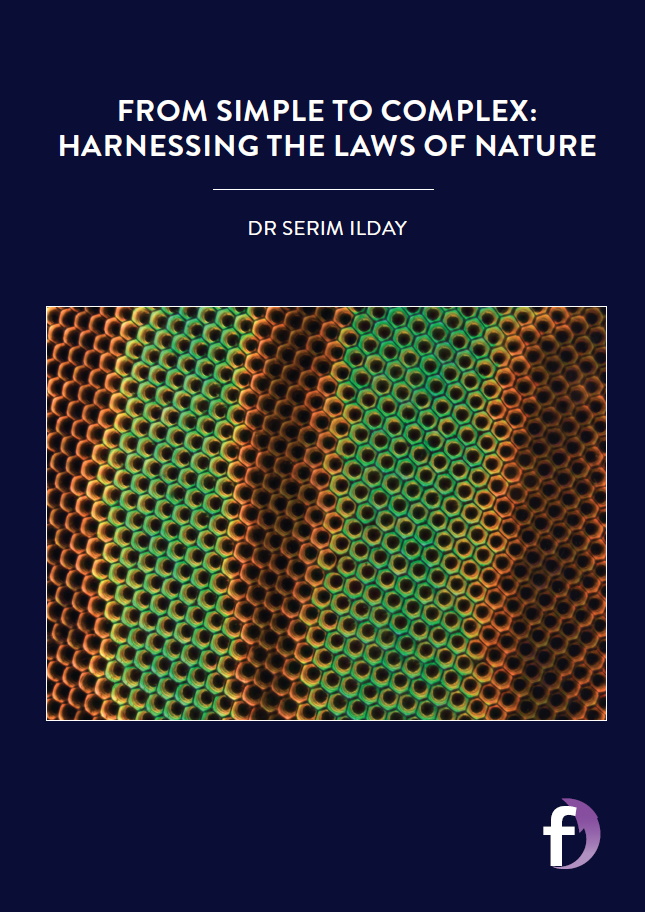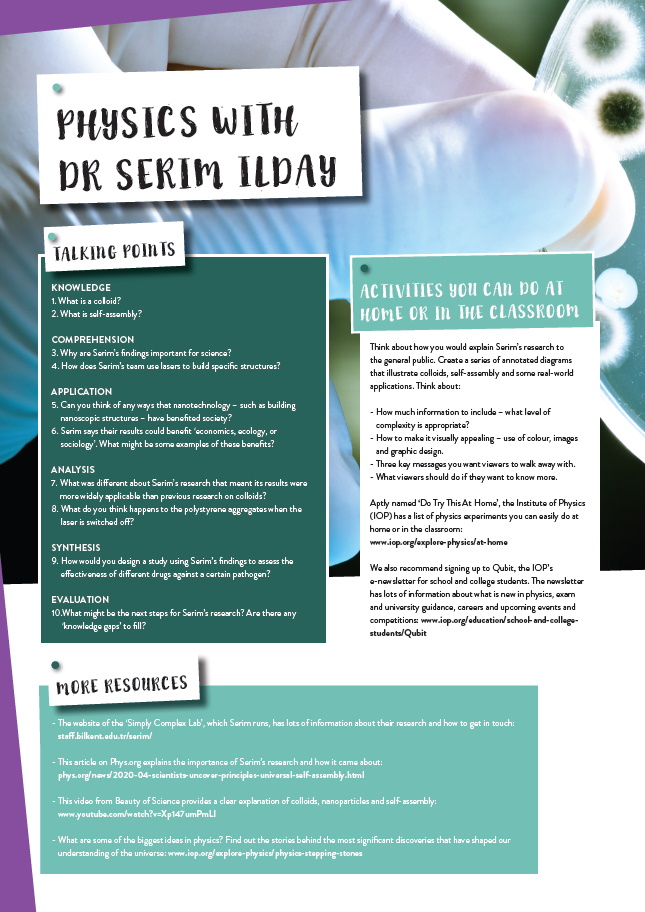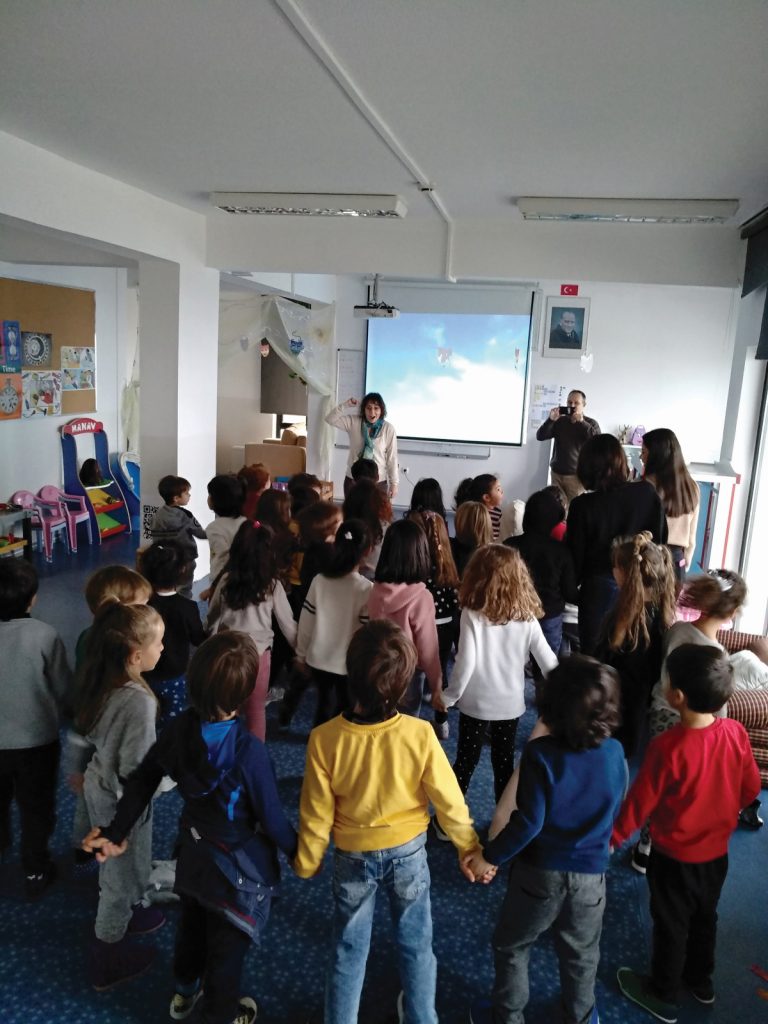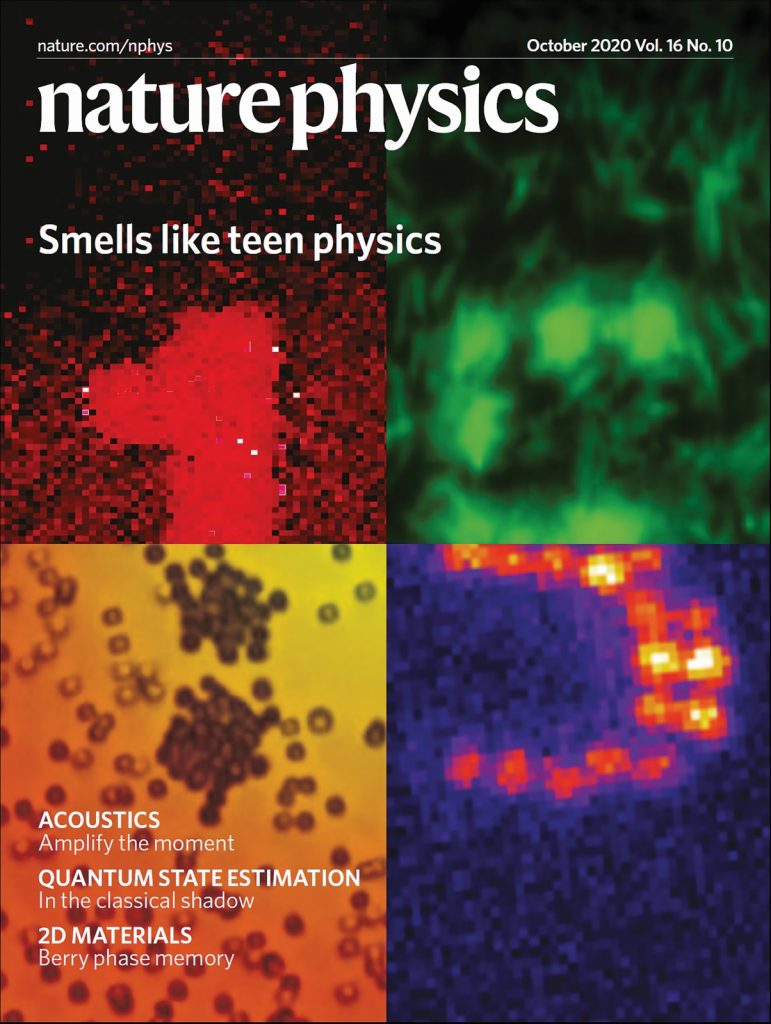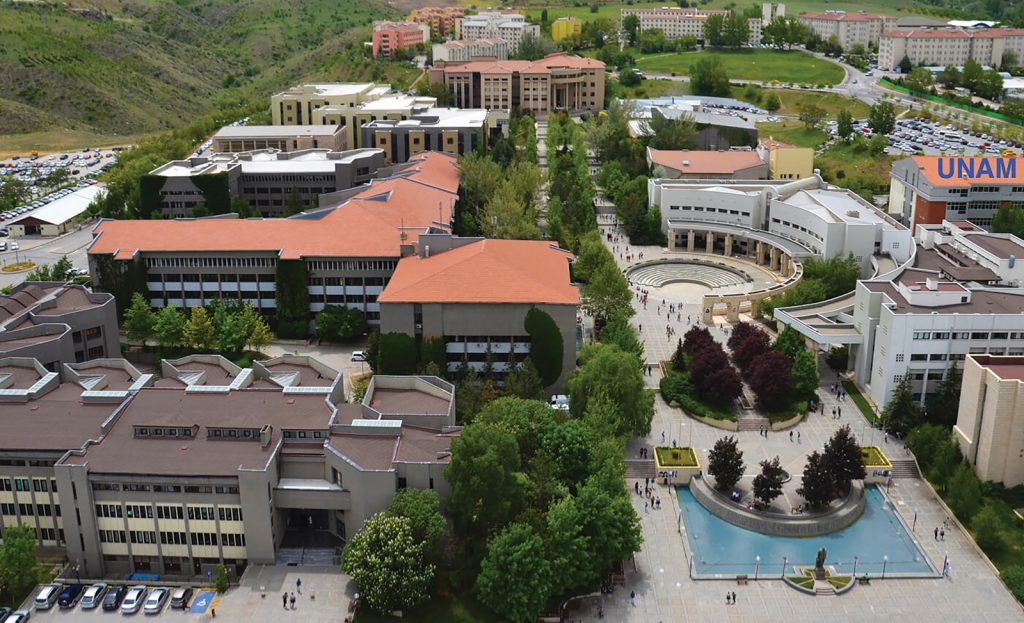From simple to complex: harnessing the laws of nature
Though life and the universe are pretty complex, there are underlying rules that govern how they work. Uncovering them is no easy task, but Dr Serim Ilday and her team at Bilkent University in Turkey believe they have cracked an important one. Using simple ingredients – water, polystyrene balls and an ultra-fast laser – they have uncovered some fascinating universal truths, which have very promising real-world applications
GLOSSARY
AGGREGATE – when a structure is formed from a mass of individual particles
BROWNIAN MOTION – the random motion of particles suspended in a fluid
COLLOID – a mixture of particles of one substance dispersed through another substance
CRYSTAL – a structure made up of an ordered aggregation of atoms
SELF-ASSEMBLY – when the components of a system organise themselves into a structure or pattern without any external direction
How do simple things become complex? This is a question that has flummoxed scientists for centuries. How do atoms group together to form complicated structures such as crystals or even cells? How do cells group together to become organisms? This concept is known as self-assembly – when the particles involved combine or aggregate into something more complex.
Though we know complexity is built from simple building blocks, knowing how exactly this happens is trickier to decipher. Now, pioneering research from the the National Nanotechnology Research Centre of Bilkent University in Turkey (Bilkent-UNAM) is uncovering these answers, and with some surprising results. Using a deceptively simple apparatus, they have found the physical ‘rule’ that determines how particles aggregate. The rule applies to particles of many shapes and sizes, which means it stands to become a key physical principle for understanding the world.
COLLOIDS – WHAT ARE THEY?
Dr Serim Ilday has been interested in this area ever since her PhD, which involved manipulating atoms to form a unique nanostructure. It is very difficult to assess what individual atoms are doing when a structure forms, so her team now uses a proxy: polystyrene balls in water. A colloid is a name given to any mixture where one substance is microscopically dispersed through the other. “Our colloid uses artificial ‘atoms’ (the polystyrene balls), but the physical processes that lead to complex pattern formation follow the same rules,” says Serim.
Without any external influence, particles will move randomly within water, moving whichever way they are pushed by the water molecules – a behaviour known as Brownian motion. “For colloids to self-assemble, you need to inject external energy,” says Serim. “This has to be delivered at a very precise moment to a very precise area.” Her team uses ultra-fast laser pulses, which heat a tiny area of the water. This creates a convection current – the hot water moves to colder areas, and is replaced by colder water – and this flow carries particles along with it. “Think of a wave in the ocean, that drags surfers along with it,” says Serim. These particles will collect in the same area and form an aggregate.
Once these particles begin to aggregate, a positive feedback loop forms. “When you pack spheres, you end up having voids between them, which slows down the water flow,” says Serim. “However, water is still flowing fast towards the aggregate, so will quickly carry more particles close to the aggregate, which the particles will join as soon as the flow slows.” In this way, the aggregate grows larger and larger, though the effects of Brownian motion will be stripping it of particles at the same time. “By accounting for these effects, we can manipulate the distances between colloids, creating a large variety of patterns and crystals,” says Serim.
WHY THIS IS IMPORTANT
The team’s reliance upon physical rather than chemical processes is the key to why their results are so widely relevant. “Self-assembly research has tended to rely upon chemistry,” says Serim. “Colloids were usually decorated with materials sensitive to magnetic, electric or light fields, and placed in complex chemical mixtures. I needed a simpler system, where everything that happens only resulted from the system’s internal dynamics, not because someone engineered them.” Her polystyrene-water mixture does exactly this – no chemical interactions are taking place, so they can be sure the behaviour they see is down to internal processes. “Our system is unique because it’s purely physical,” says Serim. “This means we can quantify and mathematically formulate how it works, and this can be generalised to other systems – as diverse as economics, ecology or sociology.” Serim believes the system lays a cornerstone for uncovering the ‘physics of life’. This is a decades-old idea that all living systems can be broken down into physical and mathematical processes, but while theoretically accepted, it has been very challenging to pin down these processes – until, perhaps, now. It is unusual for the results of an experiment to be applicable to so many different systems, at so many different scales, which is why the team’s results have sent ripples through the scientific community.
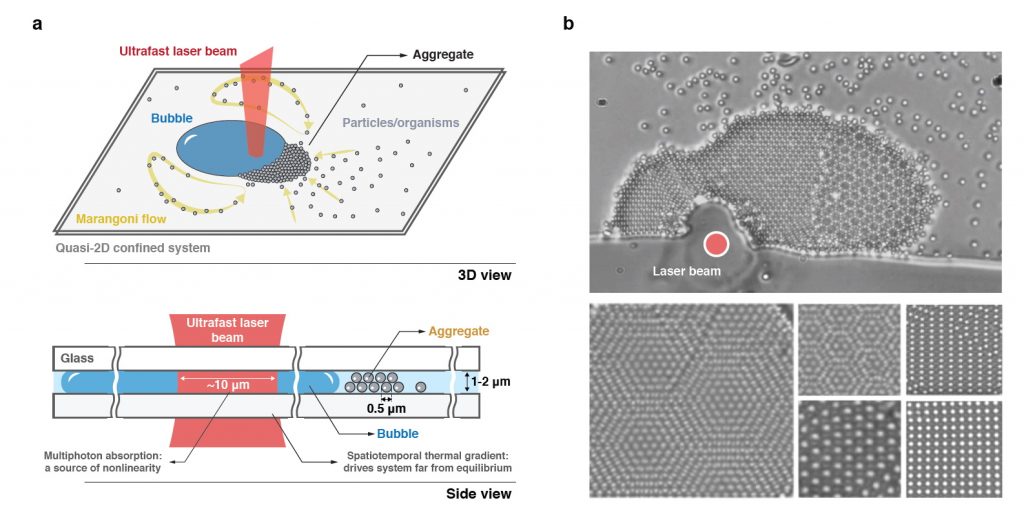
IN THE REAL WORLD
“Physical forces are universal and apply to everything, living and non-living,” says Serim. Her team has even used their techniques on nanoparticles, which follow the rules of quantum physics, forming new crystalline structures. These structures could have unique properties that are potentially useful for all manner of real-world applications. And that is not all – at the other end of the size spectrum, the team’s techniques work for living things, too. “In our system, we can use the same method to collect living bacteria, yeast or human cells, and move them around in whatever way we want – even putting them into shapes, like stars or rectangles.”
This could bring big benefits for medicine. If a patient is suffering from an unusual disease, it can be time-consuming to work out which treatment to use. This is largely due to the necessity of growing – or ‘culturing’ – a population of the pathogens from a sample, so the scientists have enough pathogen cells to see what they respond to. But Serim’s system could be used to make the pathogens in a sample all gather in one place and force them to intake a particular drug. This could mean that no culture time is needed, because scientists can get a substantial sample size just by using physical forces to gather the microbes together. Serim concludes: “This method in its current form cannot replace common practices, but over time, it could be developed and optimised until it’s an effective healthcare tool.”
Reference
https://doi.org/10.33424/FUTURUM188
AGGREGATE – when a structure is formed from a mass of individual particles
BROWNIAN MOTION – the random motion of particles suspended in a fluid
COLLOID – a mixture of particles of one substance dispersed through another substance
CRYSTAL – a structure made up of an ordered aggregation of atoms
SELF-ASSEMBLY – when the components of a system organise themselves into a structure or pattern without any external direction
How do simple things become complex? This is a question that has flummoxed scientists for centuries. How do atoms group together to form complicated structures such as crystals or even cells? How do cells group together to become organisms? This concept is known as self-assembly – when the particles involved combine or aggregate into something more complex.
Though we know complexity is built from simple building blocks, knowing how exactly this happens is trickier to decipher. Now, pioneering research from the the National Nanotechnology Research Centre of Bilkent University in Turkey (Bilkent-UNAM) is uncovering these answers, and with some surprising results. Using a deceptively simple apparatus, they have found the physical ‘rule’ that determines how particles aggregate. The rule applies to particles of many shapes and sizes, which means it stands to become a key physical principle for understanding the world.
COLLOIDS – WHAT ARE THEY?
Dr Serim Ilday has been interested in this area ever since her PhD, which involved manipulating atoms to form a unique nanostructure. It is very difficult to assess what individual atoms are doing when a structure forms, so her team now uses a proxy: polystyrene balls in water. A colloid is a name given to any mixture where one substance is microscopically dispersed through the other. “Our colloid uses artificial ‘atoms’ (the polystyrene balls), but the physical processes that lead to complex pattern formation follow the same rules,” says Serim.
Without any external influence, particles will move randomly within water, moving whichever way they are pushed by the water molecules – a behaviour known as Brownian motion. “For colloids to self-assemble, you need to inject external energy,” says Serim. “This has to be delivered at a very precise moment to a very precise area.” Her team uses ultra-fast laser pulses, which heat a tiny area of the water. This creates a convection current – the hot water moves to colder areas, and is replaced by colder water – and this flow carries particles along with it. “Think of a wave in the ocean, that drags surfers along with it,” says Serim. These particles will collect in the same area and form an aggregate.
Once these particles begin to aggregate, a positive feedback loop forms. “When you pack spheres, you end up having voids between them, which slows down the water flow,” says Serim. “However, water is still flowing fast towards the aggregate, so will quickly carry more particles close to the aggregate, which the particles will join as soon as the flow slows.” In this way, the aggregate grows larger and larger, though the effects of Brownian motion will be stripping it of particles at the same time. “By accounting for these effects, we can manipulate the distances between colloids, creating a large variety of patterns and crystals,” says Serim.
WHY THIS IS IMPORTANT
The team’s reliance upon physical rather than chemical processes is the key to why their results are so widely relevant. “Self-assembly research has tended to rely upon chemistry,” says Serim. “Colloids were usually decorated with materials sensitive to magnetic, electric or light fields, and placed in complex chemical mixtures. I needed a simpler system, where everything that happens only resulted from the system’s internal dynamics, not because someone engineered them.” Her polystyrene-water mixture does exactly this – no chemical interactions are taking place, so they can be sure the behaviour they see is down to internal processes. “Our system is unique because it’s purely physical,” says Serim. “This means we can quantify and mathematically formulate how it works, and this can be generalised to other systems – as diverse as economics, ecology or sociology.” Serim believes the system lays a cornerstone for uncovering the ‘physics of life’. This is a decades-old idea that all living systems can be broken down into physical and mathematical processes, but while theoretically accepted, it has been very challenging to pin down these processes – until, perhaps, now. It is unusual for the results of an experiment to be applicable to so many different systems, at so many different scales, which is why the team’s results have sent ripples through the scientific community.

IN THE REAL WORLD
“Physical forces are universal and apply to everything, living and non-living,” says Serim. Her team has even used their techniques on nanoparticles, which follow the rules of quantum physics, forming new crystalline structures. These structures could have unique properties that are potentially useful for all manner of real-world applications. And that is not all – at the other end of the size spectrum, the team’s techniques work for living things, too. “In our system, we can use the same method to collect living bacteria, yeast or human cells, and move them around in whatever way we want – even putting them into shapes, like stars or rectangles.”
This could bring big benefits for medicine. If a patient is suffering from an unusual disease, it can be time-consuming to work out which treatment to use. This is largely due to the necessity of growing – or ‘culturing’ – a population of the pathogens from a sample, so the scientists have enough pathogen cells to see what they respond to. But Serim’s system could be used to make the pathogens in a sample all gather in one place and force them to intake a particular drug. This could mean that no culture time is needed, because scientists can get a substantial sample size just by using physical forces to gather the microbes together. Serim concludes: “This method in its current form cannot replace common practices, but over time, it could be developed and optimised until it’s an effective healthcare tool.”
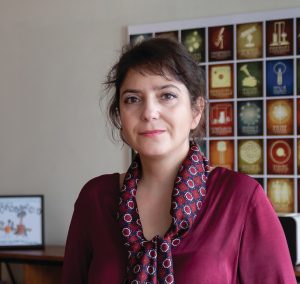 DR SERIM ILDAY
DR SERIM ILDAY
Assistant Professor
National Nanotechnology Research Center (UNAM) and Institute of Materials Science and Nanotechnology
Bilkent University, Turkey
FIELD OF RESEARCH: Physics, Materials Science, Nanotechnology
RESEARCH PROJECT: Using simple physical models to reveal fundamental rules of self-assembly applicable across many different systems
FUNDER:European Research Council, The Scientific and Technological Research Council of Turkey
 DR SERIM ILDAY
DR SERIM ILDAY
Assistant Professor
National Nanotechnology Research Center (UNAM) and Institute of Materials Science and Nanotechnology
Bilkent University, Turkey
FIELD OF RESEARCH: Physics, Materials Science, Nanotechnology
RESEARCH PROJECT: Using simple physical models to reveal fundamental rules of self-assemblyapplicable across many different systems
FUNDER:European Research Council, The Scientific and Technological Research Council of Turkey
ABOUT PHYSICS
Serim’s background is in physics, although her work also relates to materials science and nanotechnology. Physics is the study of energy, forces, mechanics, waves and the structure of atoms and the physical universe. The word ‘physics’ comes from ancient Greek and means ‘knowledge of nature’. Given that physicists can tackle a range of problems from cancer treatment to climate change and artificial intelligence, a career in physics will put you on the frontline. We ask Serim about the wonderful world of physics.
WOULD YOU RECOMMEND A CAREER IN PHYSICS?
Absolutely. Physics education teaches people to think outside the box, and gives them profound observational and analytical skills. You’ll understand that there are simple yet elegant physical explanations to the world around you: How trees branch, why the sky is blue, how flocks of birds make decisions – these questions are just a few examples. A physics understanding fosters problem-solving and decision-making, which will make you ideal candidates for a variety of jobs, from academia to positions in the public or private sectors, plus exciting and innovative fields such as robotics and data science.
WHAT ARE SOME EXCITING EMERGING FIELDS OF PHYSICS?
Recently, subjects such as complex systems, biophysics, dark energy and matter, artificial intelligence and quantum computing have gained much interest. Within the next few years, I believe each of these will expand the limits of our understanding of the universe, the capabilities of technology, and our knowledge of ourselves. I recommend reading popular science books on these topics and visiting websites of publications such as Quanta Magazine or Physics World.
HOW CAN STUDENTS WITH AN INTEREST IN PHYSICS FIND OUT MORE?
Many universities and research institutes have outreach programmes. Here in Turkey, we encourage the younger generation to visit our labs and talk to us, and we visit schools and teach students about ideas in physics through games and short presentations. For anyone interested in complex systems, statistical physics or biophysics, you are welcome to contact me or my research group for help or advice.
EXPLORE A CAREER IN PHYSICS
• Many universities and research centres around the world run outreach activities, which can be an excellent way to get a taste of a particular subject or field. For instance, the Konya Science Center in Turkey ran an interactive introduction to nanotechnology.
• National and international organisations run outreach programmes for physics. For instance, the American Physical Society has a wide range of events and resources for schools: www.aps.org/programs/outreach/index.cfm
• Salaries for physicists can vary widely. According to SalaryExpert, the average physicist salary in state universities Turkey is 123,000 ₺ (£11,000). This is about four times the average salary in Turkey. Salaries in private universities are even higher.
An undergraduate degree in physics requires a robust knowledge of physics and mathematics, while biology, chemistry and computer science can also be highly useful. Courses in materials science and nanotechnology usually have similar requirements. It is always worth checking the requirements of courses that might interest you before selecting subjects to study.
HOW DID SERIM BECOME A PHYSICIST?
DID YOU ALWAYS WANT TO BECOME A SCIENTIST?
Yes! When I was a child, my best friend was a screwdriver – it helped me investigate the insides of the TV, radio, torch, iron, you name it. I also remember reading about the fantastic inventions of great scientists, though feeling pretty desperate that it seemed they had left nothing more to discover!
WHAT INSPIRED YOU TO GET INTO PHYSICS?
I wanted to understand the world around me. I trained in chemistry and maintained an interest in biology and engineering, which all taught me to pay attention to minute details, perform careful experiments, and practise laboratory skills. However, physics taught me to look at the world from a broader perspective and connect the dots between different ideas.
HOW DID YOU MOVE INTO NANOTECHNOLOGY?
Nanotechnology was an emerging and thrilling research field when I was studying chemistry at university. Naturally, I wanted to know more about it and understood that I should first study materials science and physics, which I did during my PhD. At this time, I discovered a brand new nanostructure with unusual electrical and optical properties.
YOU ARE THE RECIPIENT OF SEVERAL AWARDS, INCLUDING THE L’OREAL-UNESCO AWARD FOR WOMEN IN SCIENCE. DOES THIS RECOGNITION HELP DRIVE YOU?
Curiosity is my main driving force, but recognition certainly does help fuel my work. They confirm how important our work is to the scientific community and the wider world. I also take great joy in seeing the ideas that exhilarate me resonate with others.
WHAT DO YOU LIKE TO DO OUTSIDE OF WORK?
I like to spend time with my family, and walking provides me with time to think and plan. I also read a lot!
SERIM’S TOP TIPS
01 Read widely. This will help open your mind to diverse ideas and different perspectives,
broadening your horizons. Discuss the things you learn with others and listen to their approaches to understanding concepts. In addition, write down your own ideas to rationalise them – what are their weaknesses and strengths?
02 If you can, visit scientists in the lab. They will often be eager to talk about their research and offer learning opportunities for you.
03 Never give up. Failures teach us the most and are precious to a scientist. They will teach you to identify and correct your mistakes, and nothing is more satisfying than discovering something important that nobody else yet knows!
Do you have a question for Serim?
Write it in the comments box below and Serim will get back to you. (Remember, researchers are very busy people, so you may have to wait a few days.)

